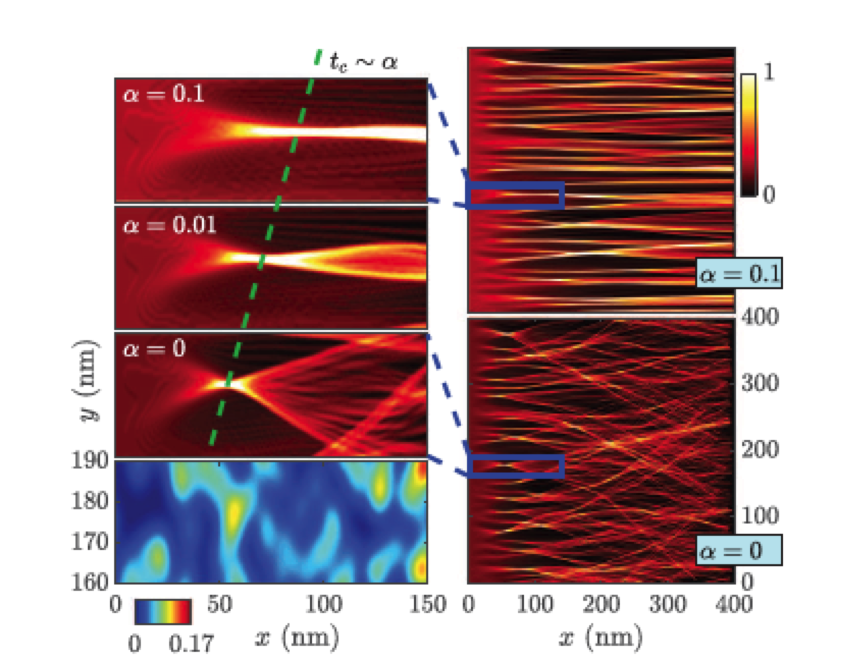When waves propagate in weakly disordered media they experience focusing and defocusing effects that lead to the formation of stochastic branches, i.e. coalescing of rays and formation of singular caustic points. These phenomena appear in geophysical flows but also in optical ray propagation and electronic flow in disordered metals. Recent work by teams from the University of Crete and Harvard University showed that similar phenomena may occur also in the two dimensional “exceptional-materials” such as graphene and other Dirac solids.
When graphene is placed on a non-perfect-planar substrate, the distribution of charges forms “puddles” that act as a random potential for injected charge carriers. The basic property in the band structure of Dirac solids, of which graphene is an eminent member, is the linearized spectrum; this makes electrons move like ulta-relativistic particles in the two dimensional disordered potential. In this motion the Fermi velocity plays a role similar to the speed of light. If, additionally, a voltage is applied along a certain direction, the resulting electronic motion is simple along this axis while experiences random scattering in the perpendicular direction. This stochastic motion leads to ray coalescence and singularity formation. The application of the external voltage modifies the location of the branches.

The team by M. Mattheakis and E. Kaxiras (Harvard University) and G.P. Tsironis (University of Crete) mapped the mathematical problem into a simpler stochastic differential equation that was solved analytically and numerically. This equation gave a statistical prediction on the location of caustic events that was compared with direct simulations. The results show that graphene branching flow is relatively simple yet intricate and the phenomenon may be of physical and technological utility.
Article: “Emergence and dynamical properties of stochastic branching in the electronic flows of disordered Dirac solids", Marios Mattheakis, G. P. Tsironis, and Efthimios Kaxiras, Europhysics Letters, Volume 122, Number 2 (2018).



